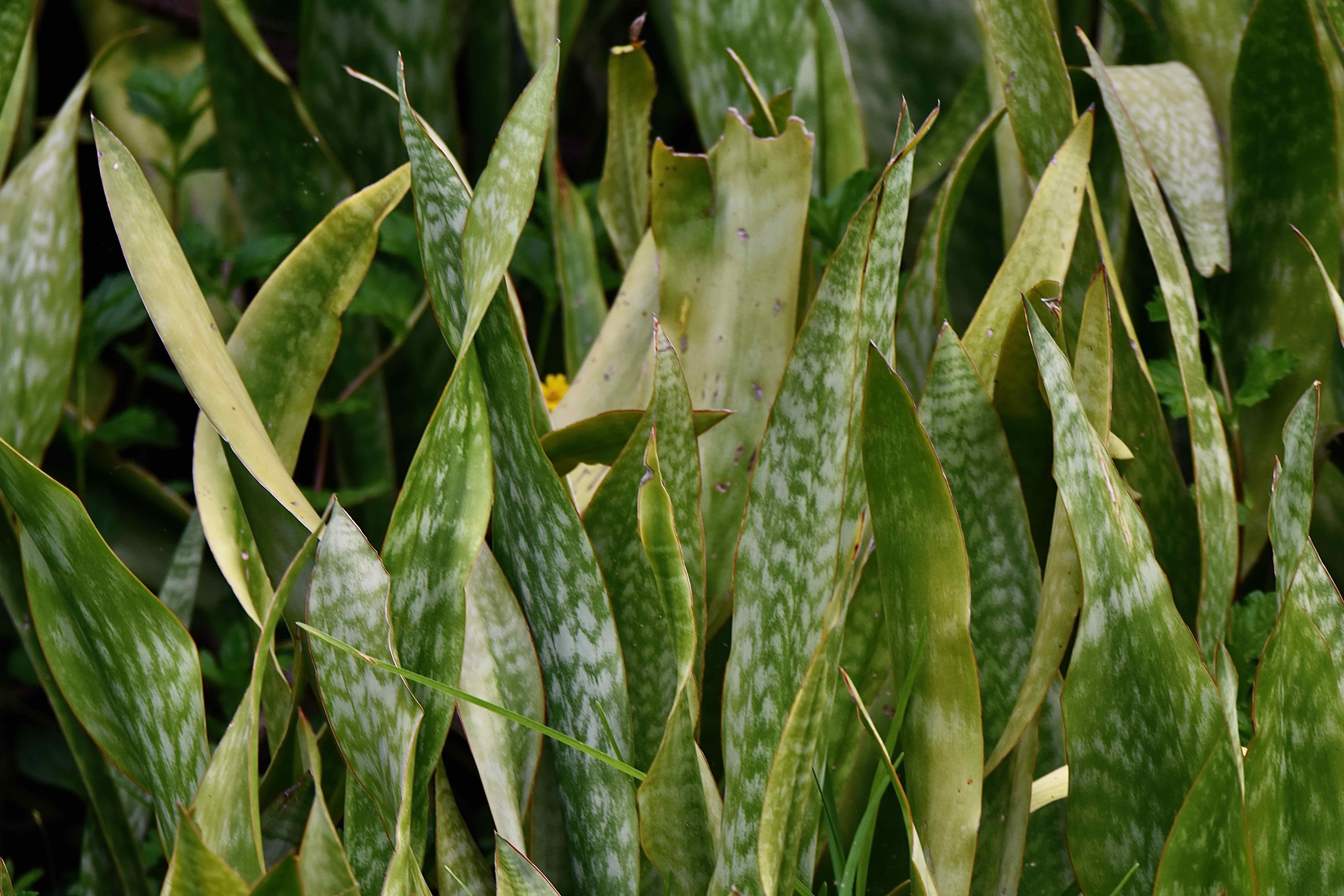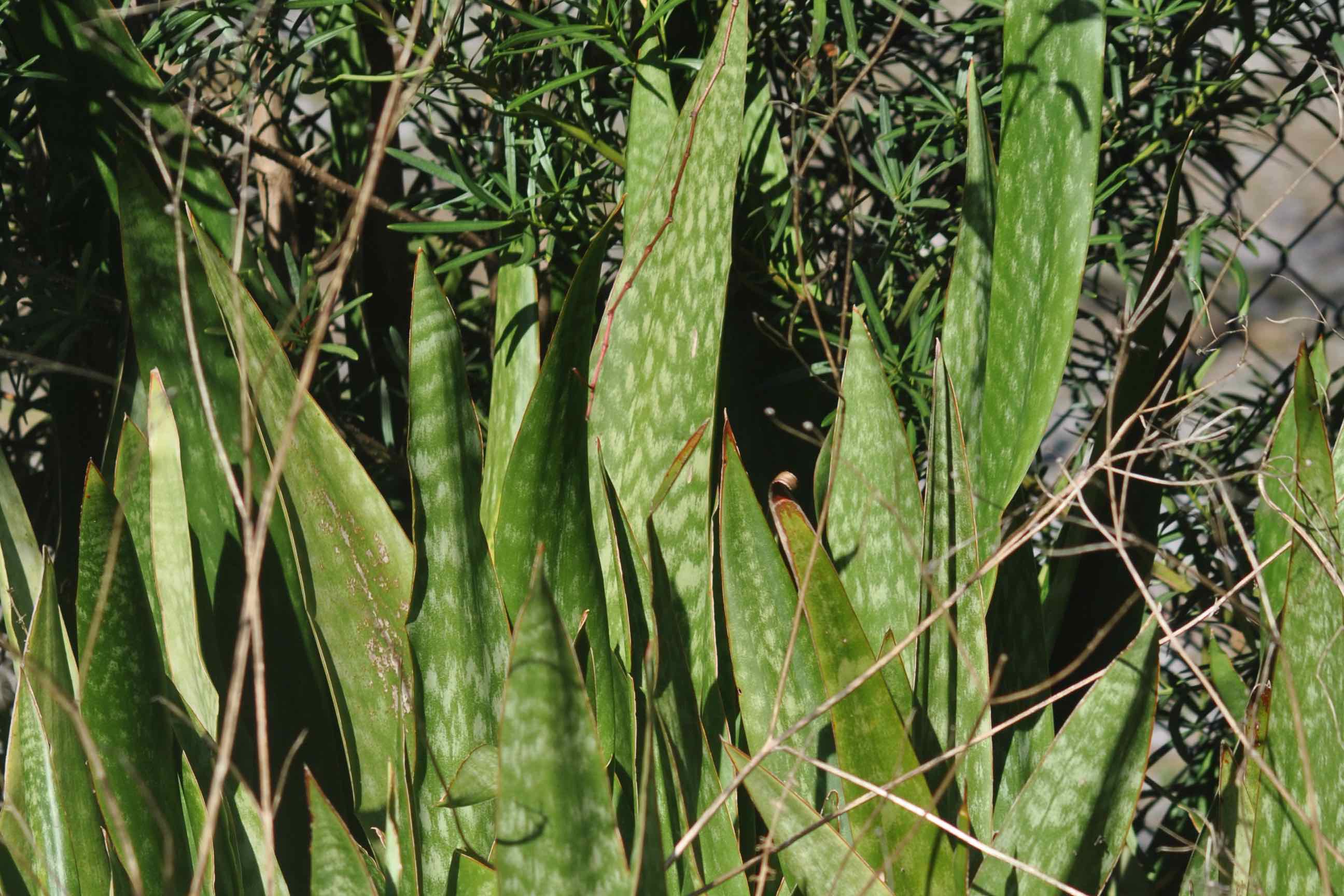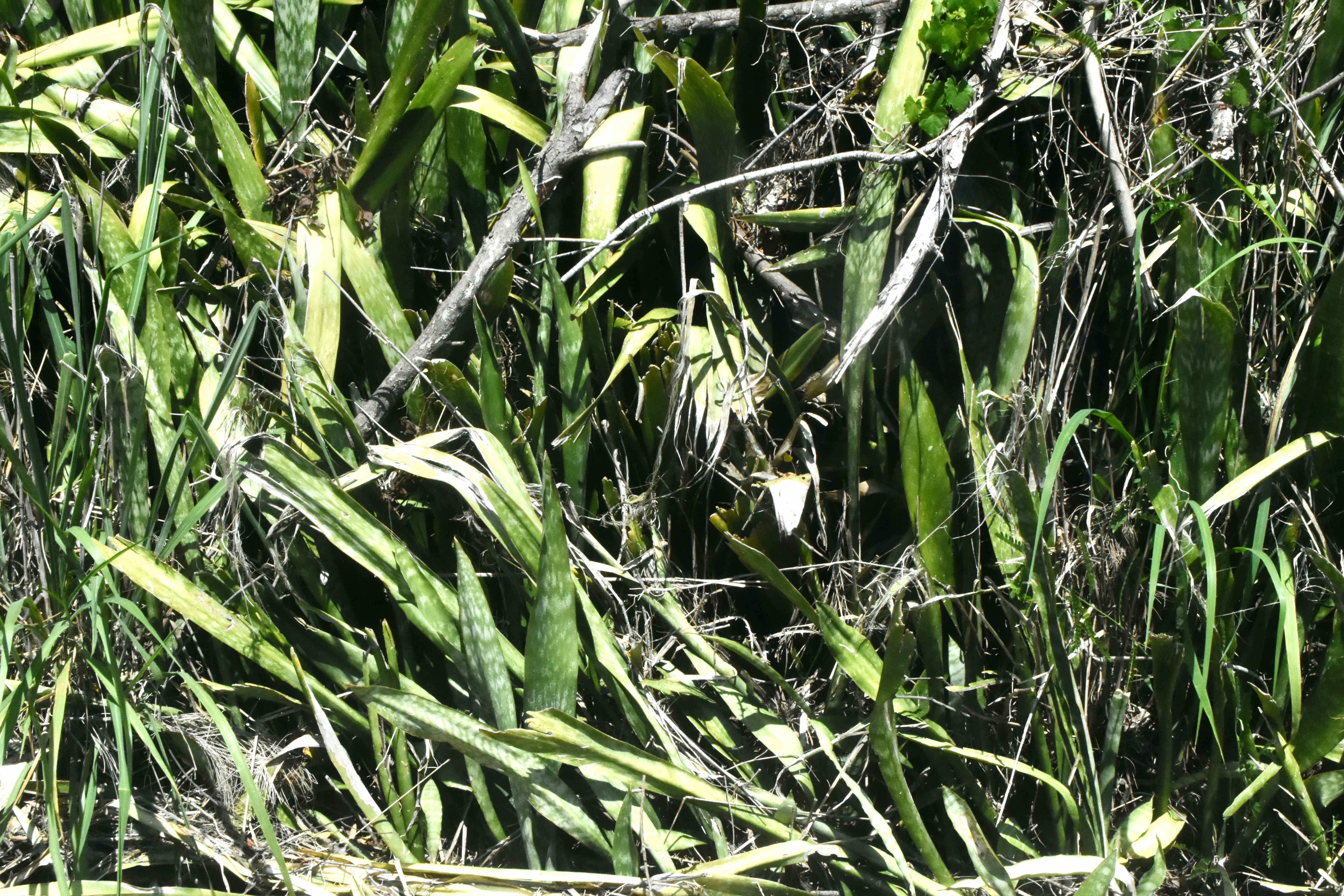
Mother-in-law's tongue, photographed along A1A, Palm Beach County, in June 2017.
There might not be an easier house plant in the world to grow than mother-in-law's tongue, aka Sansevieria hyacinthoides. It is made to take abuse and not just survive, but thrive. Which is great when it's a house plant, not so great when it makes its way into the wild.
It will send out shoots via rhizomes, or underground stems, and form dense patches that crowd out native plants. Mother-in-law's tongue is also commonly known as snakeplant and by the United States Department of Agriculture as viper's bowstring hemp.
Mother-in-law's tongue is not native to Florida or in fact anywhere in the western hemisphere, hailing instead from Zimbabwe and other parts of southern Africa. It is only found growing in the wild in Florida among the 48 contiguous states, and only from Central Florida south. Florida considers it a Category II invasive, meaning it has yet to do any environmental damage, but is spreading and bears watching.
The plant puts out blade-like leaves that are sharply pointed at the end and as tall as three feet. The leaves vary in color, some dark green, others light, with mottled yellow or white bands. We've seen it grow in deep shade and we've seen it in full sun, doing well in both. White and whispy flowers grow from a long spike. It produces a small red berry, though we can't say we've ever seen it bearing fruit.
Mother-in-law's tongue is extremely fibrous, and for centuries, it was used for making cords and ropes, baskets, bowstrings and similar products. It still is in parts of Africa. Its ability to thrive under tough conditions, plus its attractive foliage accounts for its popularity as a house plant. Mother-in-law's tongue also has a major health benefit: the ability to remove toxins such as formaldehyde from the air.
When used as a house plant, mother-in-law's tongue is well-behaved. The problem comes when plants are tossed as trash outdoors. In other words, humans are the problem.
In Africa, mother-in-law's tongue is used to make a variety of medicines and remedies. In Zimbabwe, for example, it's used traditionally to dialate the birth canal and to prevent complications generally during childbirth. The root is used to make baby food. It's also used to make a treatment for toothache and sprained ankles.
Scientific research has found mother-in-law's tongue to have antioxident, antibacterial and anti-inflammatory properties.
It's an important plant within its natural range, the leaves serving as food for antelope and rhinoceros, the rhizomes for mole rats, while birds use the fibers for nest building.
It goes by a host of other common names, including iguanatail, devil's tongue, good luck plant, snake sansevaria and St. George's sword. The above-mention viper's bowstring hemp might be the most imaginative.
The scientific name honors Pietro Sanseverino, prince of Bisignano near Naples, while hyacinthoides means resembling a hyacinth.
Both the Institute for Regional Conservation and Flora of North America place mother-in-law's tongue in Agavaceae, the agave family, while the Florida Atlas of Vascular Plants has it in Ruscaceae and the U.S. Department Agriculture's PLANTS database puts it in Asperagaceae, the asperagus family. Links for all four are below. For consistency sake, we list it under Agavaceae, but your mileage may vary.



